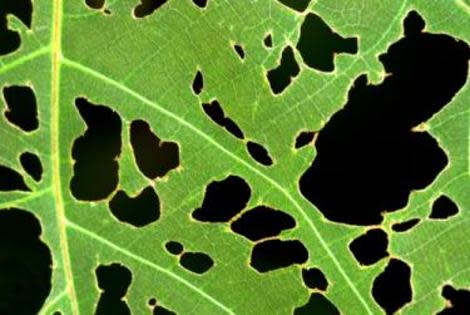Spots and Rot: What is Going on with My Garden?
By Dianne Venetta, GalTime Garden Guru

They have spots, holes, discoloration… Quickly leafing through the pages of your garden encyclopedia, you check for images with similar markings-anything that might give you an indication as to what could be happening.
Ha! Found something. Scanning the description, you learn you have some sort of fungus. Fungus. Ugh. Now what? I'm organic. I can't spray anything on my vegetables-I have to eat those things!
You're correct to be alarmed. Whatever you spritz on your leaves you may as well spritz on your tongue. It all ends up in the same place, right?
That is one of the main reasons I like to garden organically.
Related: Feeding Your Plants Au Natural
Commercial sprays are efficient but loaded with chemicals that can do a number on humans. While scientific evidence can't always pinpoint exact connections between one chemical spray and its ill-fated health effects, it does suggest they exist. As does common sense.
So, if you can eliminate or at least minimize disease in your plants with natural methods, wouldn't you do so? Even if it meant a bit more work on your part? Of course you would! But where does one begin with organic disease control? If you can't spray the problem away, what can you do?
Prevention
Organic disease control begins with prevention. Much of fungus can be prevented with proper watering techniques. Problems like powdery mildew and root rot occur because of moist conditions. In humid areas, it's an even bigger problem, because moisture hangs in the air. Yep. Just hangs there.
Related: Closing Your Garden with Cover Crops
Now I see your shoulders drooping and I know what you're thinking: how do you prevent humidity? You don't. What you can do is water your plants with a concoction of compost or manure tea. Not only is this mixture a great source of plant food, it can also help fight many plant diseases by inoculating the plants with beneficial organisms.
Get Out the Oil
Neem oil is another handy method for controlling disease, particularly early blight and rust (those red, yellow and/or orange spots on your leaves). Baking soda spray is an old-fashioned remedy that has proven successful in prevention, but bear in mind that disease can spread quickly, so remove affected leaves immediately to prevent further infection. Maintaining proper spacing between your plants to allow good air-flow is also important.
Marigold Mania
Another alternative is to use marigolds. Not only do they repel many insects, they deter underground nematodes that can assist in the destruction of your plants via their roots.
Related: Bug Free, Pesticide Free
'Solarize' Your Soil
And consider adding crop rotation to your regimen. Some diseases can linger in the soil and affect next season's crop, harming your plants before they ever have a chance to get started! In between seasons, "solarizing" your soil can help. This is the process by which you cover your beds with plastic paper and allow the sun's heat to penetrate and warm the soil to temperatures that will kill pests and disease. But plan ahead. It takes a good six weeks under the hot summer sun to achieve optimum results.
Change Varieties
Last but not least, if you find you're still having a problem with a particular plant, try a disease-resistant variety instead. No better solution than avoiding the possibility altogether! Good luck and happy gardening!
More from GalTime.com:
